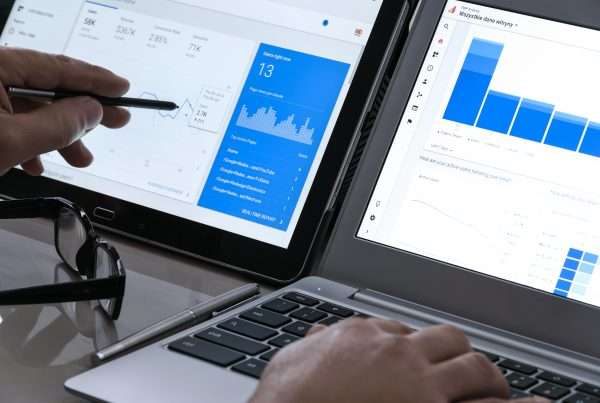Pay-per-click advertising is like life: if you want to get ahead, you have to learn from your past. Successful PPC advertisers don’t just collect data on their campaigns; they review, synthesize, and apply that data to make better decisions moving forward. The result? Improved ad spend, increased customer engagement, and higher-quality ads.
Your business has to focus on data for results-driven PPC. Don’t put in thousands of dollars and hundreds of hours of work to get poor results. You need real returns, which means looking at the hard numbers to see how you performed in the past, what went well, and what you can improve. Use this guide to identify 4 data points that are ripe with actionable information to improve your future campaigns.
The Benefits of Looking to the Past
But why bother with PPC data in the first place? Don’t brands use the data during a campaign and never look at it again?
While many brands choose not to look at their historical data, they’re missing out. You can’t identify PPC trends without a 40,000-foot view of your past performance. The good news is that brands that invest the time in data analysis win big:
- Improve ad quality: Need to boost your Quality Score? Your PPC data will tell you how to improve if you listen. Find where you’re lacking so you can improve your ads’ quality over time. That translates into more interested customers and revenue.
- Forecast accurate budgets: It’s early 2020, which means your team is deciding on budgets for the year. With historical PPC data, you can make more accurate budget predictions. Use your budget to its fullest extent, reining in expenses while spending just enough for quality engagement.
- Spend less: The more relevant and high-quality your ads, the less you’re likely to spend on those ads. PPC platforms reward high-performing content, which means you could spend less to get more results.
4 Data Points for Better PPC
Stop living in the Dark Ages. Sift through your 2019 PPC data to improve your campaigns for 2020.
Not sure where to start? Look at these 4 data points for easy PPC wins.
1. Check your goals and KPIs
Did you set goals or key performance indicators (KPIs) at the beginning of 2019? If so, pull them back out. Did you meet last year’s KPIs? Where did you excel? Where did you fall short? Are 2019’s KPIs still relevant for 2020? If not, sit down with your team and set clear goals for 2020.
Marketers love to set goals, but it’s hard to keep up with them. By evaluating your goals at the start of a new year, you can look at your PPC campaigns through a critical lens.
2. Click-through rate and conversions
One of the best ways to evaluate your ad copy and targeting is through your click-through rate (CTR) and conversions.
CTR shows how often people see your ad and click on it. If you have a low CTR, it means few people saw your ad and decided to visit your website. The conversion rate shows what percentage of people landed on your site and took action (like downloading a freebie or making a purchase).
Look at your CTR and conversion rates at the campaign, ad group, and even keyword levels. Find your best and worst performers. Can you see any patterns emerging? For example, do keywords with “near me” have higher conversion rates? If so, consider targeting more local SEO keywords for 2020.
Next, see how the CTR and conversion rate interact with each other. For example, do you tend to have a high CTR but a low conversion rate? That could mean there’s an issue with your landing page.
If you aren’t already using Google Tag Manager to track your conversions, make sure to set it up. This is the best way to attribute paid clicks to actions taken on your website. It offers more robust data that says a great deal more about your PPC campaigns than Google Analytics alone.

3. Competitor performance
How did your competitors fare in 2019? While you should review your own historical PPC data, you should also review your competitors’. After all, PPC is like a giant auction house: don’t you want to know who’s bidding against you?
Use tools like Google Auction Insights or Spyfu to get more information on your competition. These tools will help you see how competitive your ads are compared to the competition. Spyfu is a paid tool, but it can tell you how much your competitors are spending on which keywords, too.
4. Ad spend
Where did you spend your PPC budget in 2019? Break down spending by campaign and ad group, filtering by the metrics that matter most to you (like conversions, for example). Look at the ad spend relative to how much each campaign earned.
Did you spend 50% of your budget on a campaign that only brought in 5% of your earnings? If so, you now know you should shift those budget dollars for 2020. The purpose of this exercise is to calculate your return on investment (ROI) for PPC. You can tell where your money goes farthest, getting more results for as little spend as possible.
The Bottom Line
PPC is getting more competitive. To get a decent return on your campaigns, your team has to listen to the data. Boost ad quality, forecast more accurate budgets, and save more money when you look at your historical PPC data. You don’t need 10 years’ worth of PPC data to make a difference, either. 6 – 12 months of information will give you plenty of tools to overhaul your business.
But are the numbers and acronyms already making your eyes cross? We know PPC can get complicated, especially when you would rather focus on running your business. Leave the PPC management to a pro while you focus on what’s important: your customers. Get in touch with Logical Media Group to brainstorm your next PPC move.








